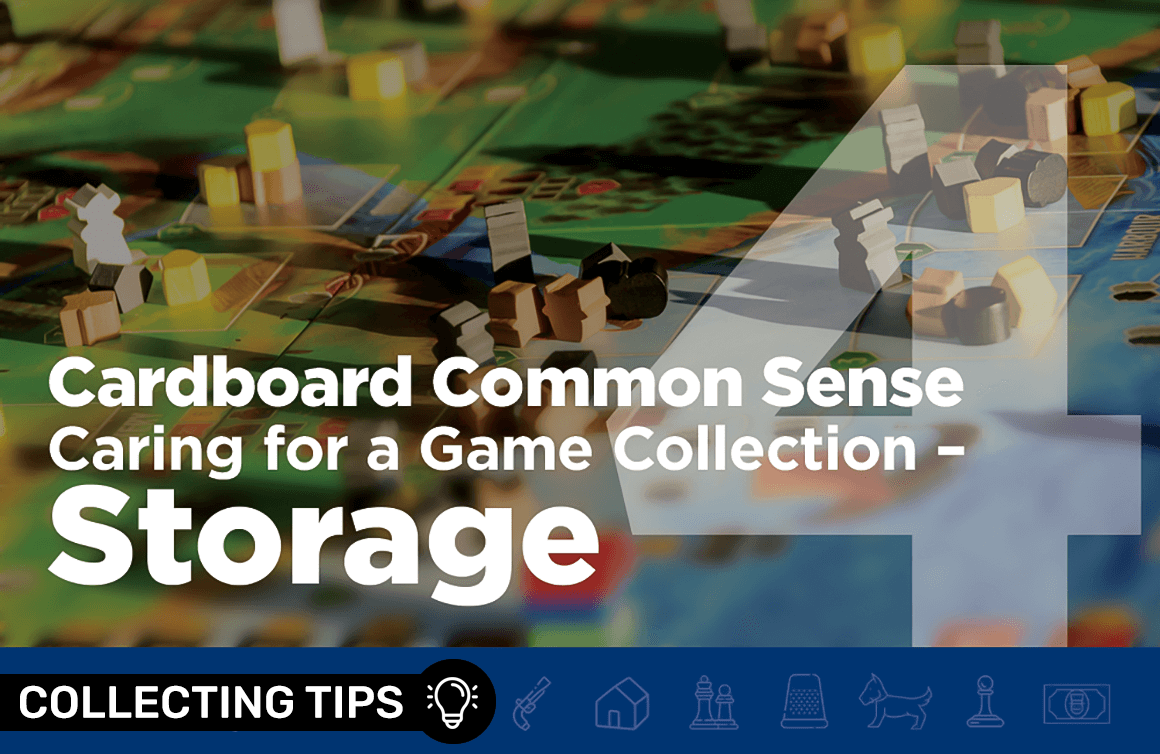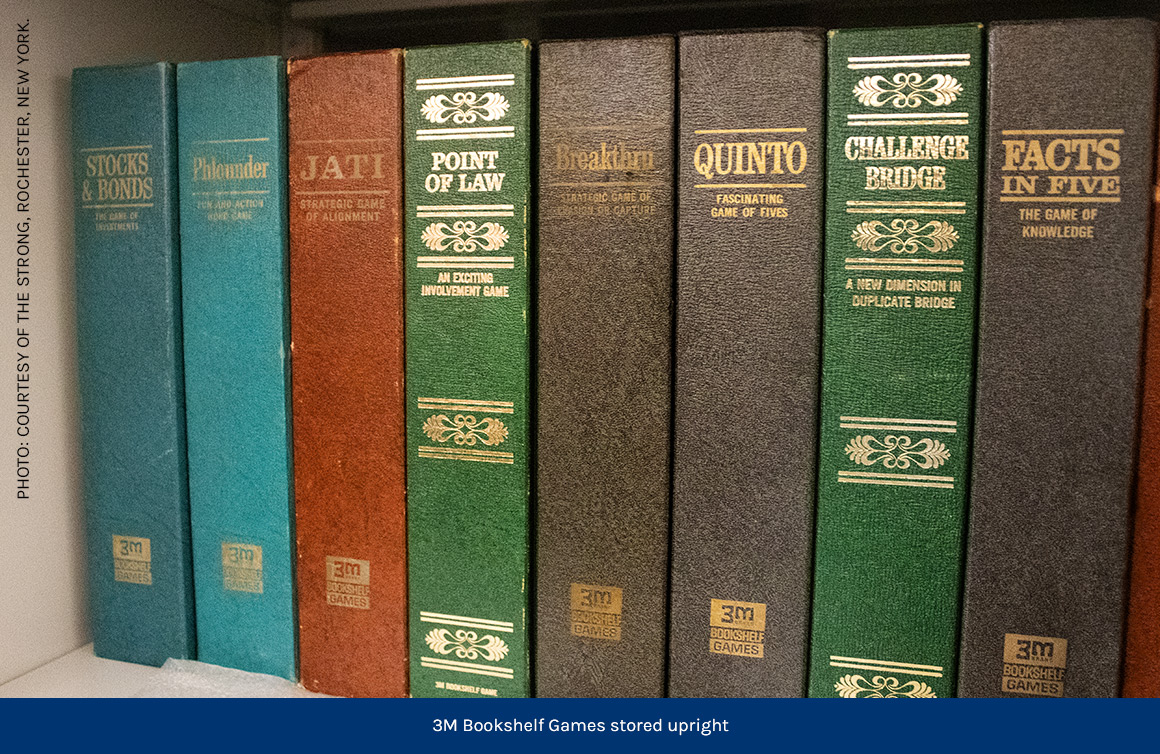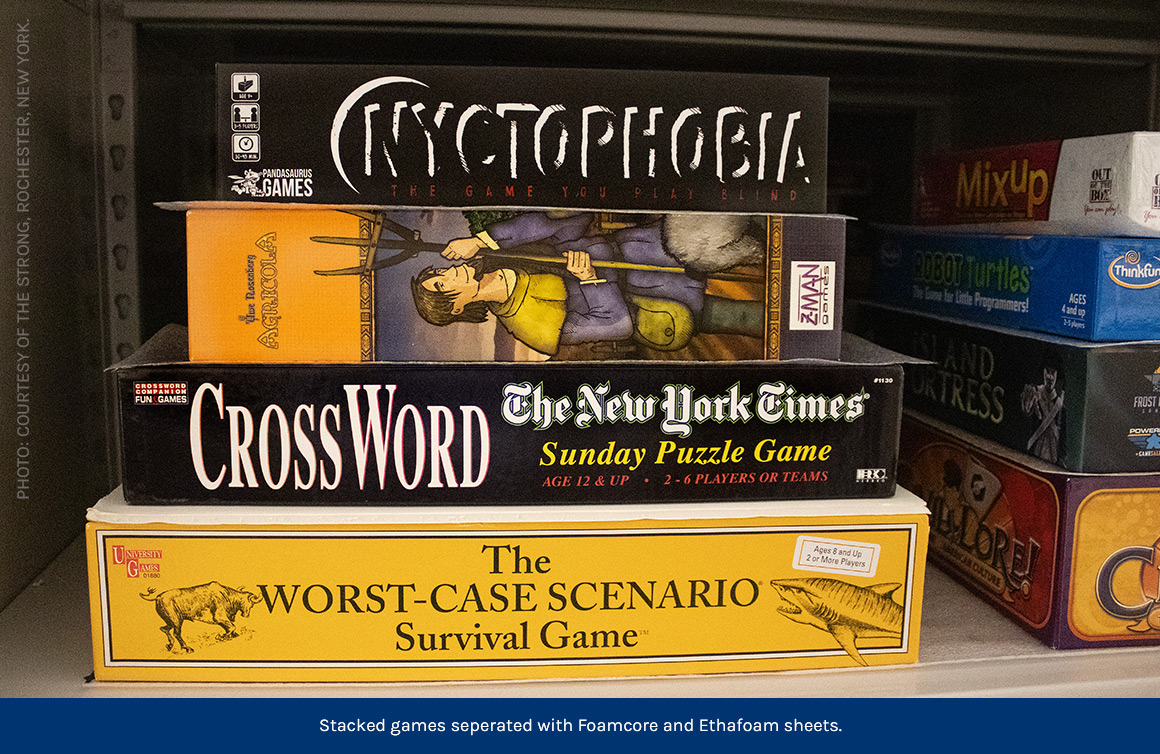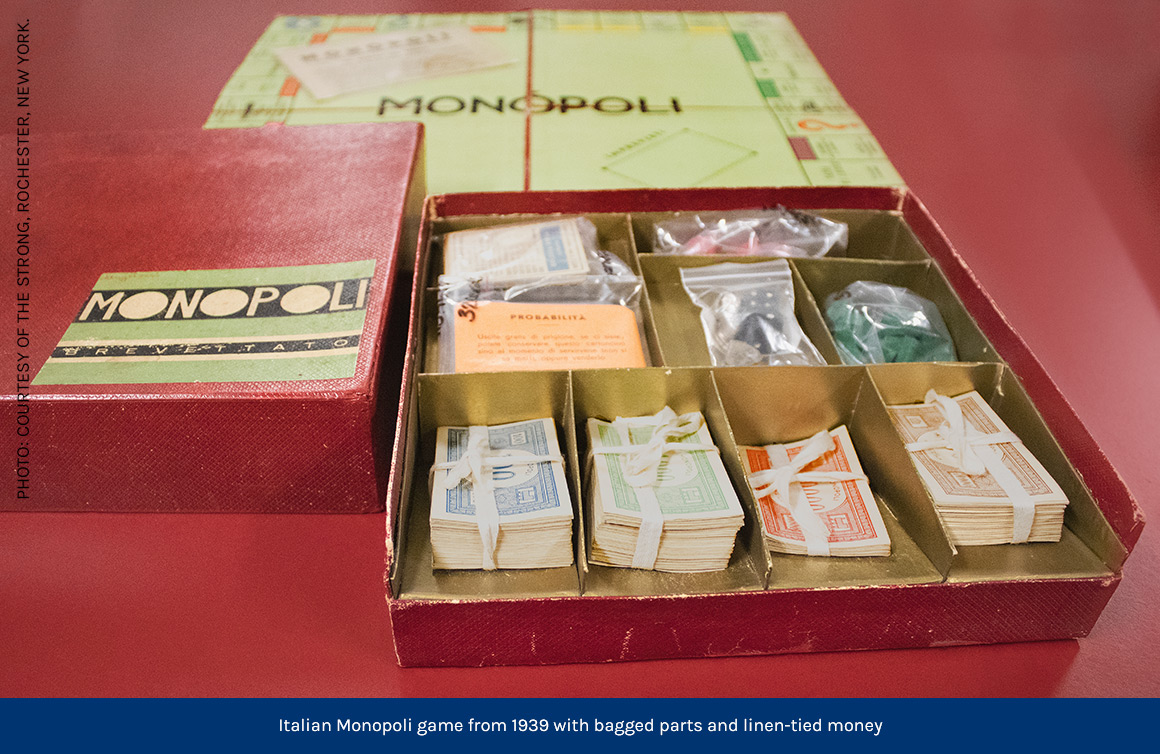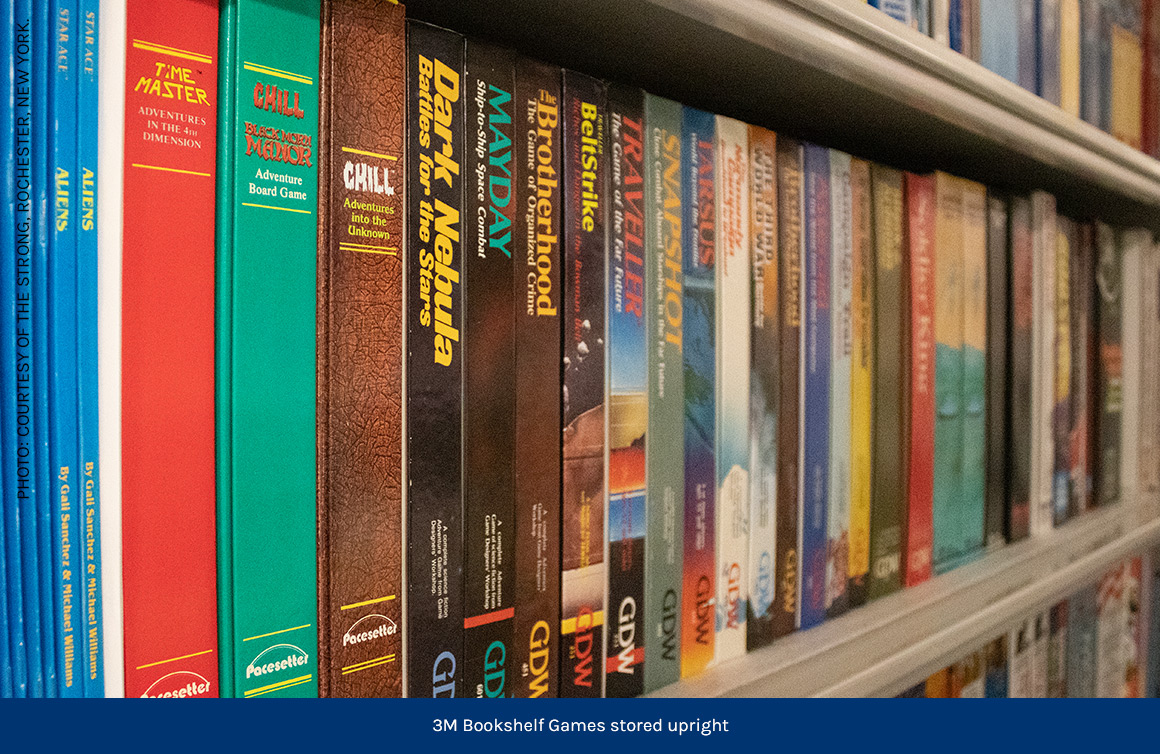Let’s say you have a complete set of 3M Bookshelf Games, even the legendary copy of Jati. Once you’ve checked the components inside and rehoused or perhaps padded them as necessary, it is perfectly fine to store these games upright, as they were meant to be stored—but watch out if you live in an earthquake zone.
But flat games pose more of a problem. Space is always a premium, so we often stack them. But again, common sense will keep them healthy. First, try to fit a sheet of neutral foam (a brand is Ethafoam ) which is closed cell polyethylene foam and it is sold in sheets of varied thickness. You need the thinnest, cut just larger than the top of the game upon which you are stacking. Acid-neutral paper sheets can also work if you’re careful stacking. Stack games of like size, or of gradually lessening size and usually no more than about five games deep. With delicate games, we often use a sheet of acid-neutral matboard, or the so-called neutral Foamcore board (the core is not neutral, but it is coated with neutral paper on both sides.) Either of these will spread out the weight of any game above the fragile game as evenly as possible. Or just don’t stack fragile games.
How do you store the cardboard tiles, plastic pawns, wooden meeples, metal pieces, and paper-based cards and money, if used? There are a couple of very simple and inexpensive ways. Some new games, especially pricey war games by major manufacturers, come with unused polyethylene (plastic) bags with “Ziploc” closures. These are ideal for all the materials listed above. They were generally included to hold cardboard markers in war games but use them to separate all your components by materials—keep the meeples in one bag, the glass markers in another, and the paper in its own. You can find these mini bags—and polyethylene, as mentioned above, is the safest and most neutral kind of plastic—at storage supply stores or better, online. If you can’t find or use these, a paper envelope is the next best, less expensive solution. Don’t seal the envelope but give it an extra fold so it won’t open. One advantage to bagging is that the plastic or paper will add a little padding. Extra paper sheets can also serve to isolate and pad incongruous materials such as metal and rubber. Now all the parts of your game are isolated from each other and easy to retrieve without sorting, for your next game night.
It should be clear that proper storage of games and their components will also help with the sorting out of the pieces each time you are ready to play—common sense works both ways. And you’re preserving the game as best you can, for years of enjoyment. If some day you decide to buy another copy, or you upgrade, your game will still be playable and you can consider donating it to a gaming group, a game library, or perhaps a museum. Happy gaming!

